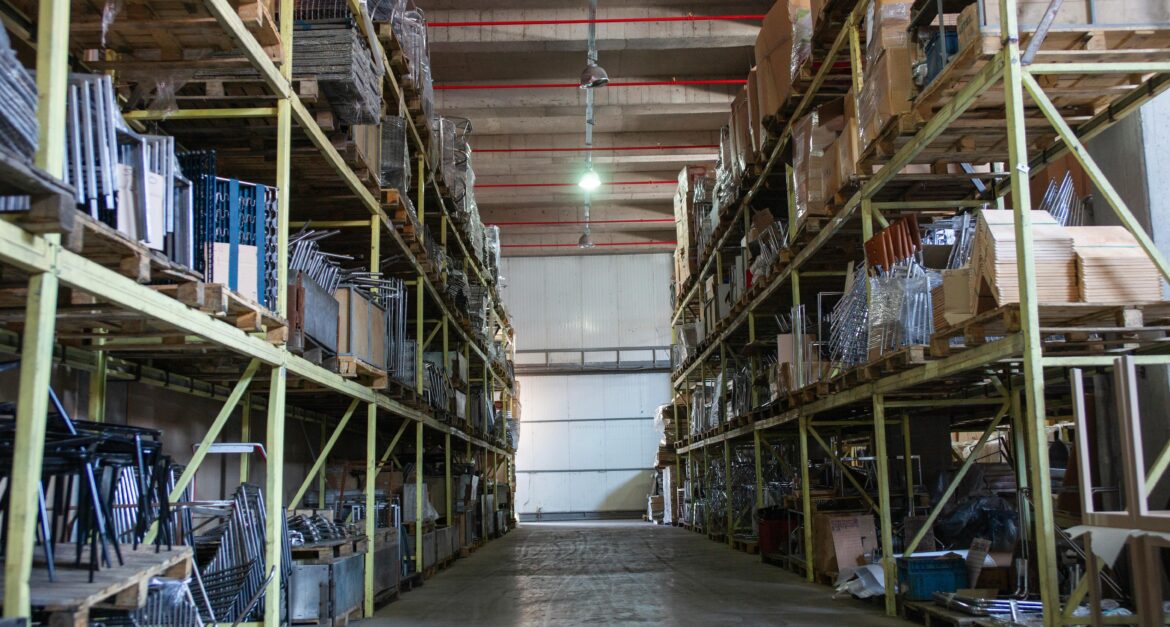
Introduction: Precision in Classification — The Core of Saudi Arabia’s Paper & Printing Trade
In 2025, Saudi Arabia’s paper and printing import ecosystem has become a vital segment of the Kingdom’s non-oil trade diversification. The demand for printing paper, office stationery, ink cartridges, printers, and packaging materials continues to grow, supported by educational development, corporate expansion, and e-commerce logistics.
However, with this growth comes complexity. Importers must navigate a web of Harmonized System (HS) codes, SASO certification requirements, and environmental labeling standards that define the success or failure of customs clearance.
Each roll of paper, toner cartridge, or notebook is classified differently under the HS Code system, which determines customs duties, import eligibility, and conformity verification.
Getting this classification wrong can mean more than lost time — it can lead to shipment detention, reclassification penalties, or rejection at port by the Zakat, Tax and Customs Authority (ZATCA).
Thus, understanding the structure, regulation, and compliance pathways behind paper HS codes Saudi Arabia, printing materials import KSA, and office supplies HS codes is no longer optional. It’s a strategic business necessity.
What Are HS Codes and Why They Matter in Saudi Imports
The Harmonized Commodity Description and Coding System (HS Code), developed by the World Customs Organization (WCO), is the universal trade language of goods classification. It enables customs authorities worldwide to identify products, assess tariffs, and apply relevant trade regulations.
Saudi Arabia’s customs system adopts this international framework with additional national sub-classifications tailored to SASO conformity, recycling policies, and environmental declarations.
For importers in the paper and printing industry, understanding HS codes ensures:
- Accurate customs clearance and tariff calculation.
- Correct SASO certification mapping.
- Eligibility for AEO (Authorized Economic Operator) privileges.
- Simplified shipment declaration through the FASAH and SABER platforms.
Core HS Codes for Paper, Printing & Stationery Materials
The following are the most relevant HS codes under which Saudi importers classify paper, printing materials, and office supplies. Each code corresponds to a unique trade category governed by ZATCA and SASO compliance.
| Category | Description | Common HS Code | Notes |
| Uncoated Printing Paper | Paper for writing, printing, and photocopying | 4802.55.00 / 4802.56.90 | Core product for offices and institutions |
| Coated Paper | Glossy, matte, or art paper for magazines | 4810.14.10 | Requires coating material declaration |
| Newsprint Paper | Roll or sheet paper for newspapers | 4801.00.00 | Low-grade, bulk import |
| Kraft Packaging Paper | Brown paper for sacks and boxes | 4819.10.00 / 4819.20.00 | Common in e-commerce packaging |
| Corrugated Cartons | Multilayered packaging board | 4819.50.00 | Used in logistics and manufacturing |
| Office Stationery (Books & Files) | Notebooks, registers, folders | 4820.10.20 / 4820.30.00 | Covers educational and business stationery |
| Adhesive Labels | Self-adhesive printed paper | 4821.10.00 | Requires adhesive chemical declaration |
| Ink Cartridges (Inkjet) | Ink cartridges for printers | 3215.90.10 | For home and commercial printers |
| Laser Toners | Powdered toner for laser printers | 3707.90.10 | Chemical composition required |
| Printers & Copiers | Multifunctional office printers | 8443.31.00 / 8443.32.00 | Includes laser, inkjet, and copier machines |
| Printing Plates | Offset and flexographic plates | 8442.50.00 | For commercial printing houses |
| Envelopes and Folders | Stationery products for offices | 4817.10.00 | Often imported in bulk |
| Carbon Copy Paper | Duplicate copy sheets | 4809.10.00 | Manual duplication and records |
| Thermal Paper Rolls | POS and ATM receipt rolls | 4811.59.00 | Regulated due to BPA chemical coating |
| Educational Posters | Wall charts and visual aids | 4911.99.20 | Often imported by schools |
| Paper Filters | Air or oil industrial paper | 4805.91.00 | Industrial applications |
| Paperboard for Packaging | Folding cartons and boxes | 4823.90.11 / 4819.50.00 | Used for food and retail packaging |
| Printed Brochures & Catalogues | Marketing and advertising materials | 4901.10.00 | Classified as printed matter |
| Paper-Based Adhesive Tape | Masking tape | 4811.41.00 | Industrial and office use |
Each of these codes links to SASO technical standards that ensure compliance with labeling, recyclability, and origin disclosure.
Regulatory Framework: SASO, ZATCA, and Environmental Compliance
Saudi Arabia enforces a strict regulatory system to align imported paper and printing materials with national safety and sustainability goals.
1. SASO Conformity Certification
The Saudi Standards, Metrology and Quality Organization (SASO) ensures that every imported product meets the Technical Regulation for Paper Products and Packaging Materials.
Importers must:
- Obtain Product Certification via SABER.
- Submit technical files proving recyclability or chemical safety.
- Ensure Arabic labeling for product name, grade, and country of origin.
2. ZATCA Customs Process
The Zakat, Tax and Customs Authority manages import entry, classification, and inspection.
To comply:
- Declare accurate HS codes in FASAH system.
- Submit Invoice, Packing List, Certificate of Origin, and Conformity Certificates.
- Align code and description consistency across documents.
3. Environmental and Recycling Standards
Saudi Arabia’s Green Initiative enforces recycling standards for all packaging and printing materials:
- Declare whether the paper is virgin or recycled.
- Provide chemical composition data for coatings or inks.
- Include recycling symbols or declarations on outer packaging.
These standards ensure that imported products contribute to Vision 2030’s sustainability goals, supporting a circular economy.
Industry Insights: Import Distribution and Market Dynamics
Import Share (2025 Estimates):
- Printing paper – 35%
- Office stationery – 25%
- Ink cartridges & printers – 25%
- Packaging paper – 15%
Saudi Arabia’s paper and printing imports primarily originate from China, India, Germany, and Indonesia, with increasing domestic investment in paper converting and recycling plants.
Applications Across Sectors
1. Education and Public Sector
The Ministry of Education and private schools rely on large imports of copy paper (HS 4802.56.90), notebooks (HS 4820.10.20), and educational charts (HS 4911.99.20).
Demand peaks during academic cycles, creating high seasonal import volumes.
2. Printing and Media
Saudi Arabia’s publishing and advertising sector uses coated paper (HS 4810.14.10) and printing plates (HS 8442.50.00) for magazines, catalogs, and branding material.
These materials must pass ink absorption and recyclability tests under SASO rules.
3. Office and Corporate Supplies
Enterprises and government offices depend on laser printers (HS 8443.31.00), toners (HS 3707.90.10), and folders (HS 4817.10.00), forming the backbone of administrative logistics.
4. Industrial Packaging and E-commerce
With Saudi Arabia’s e-commerce market projected to exceed SAR 75 billion by 2025, imports of kraft paper (HS 4819.10.00) and corrugated cartons (HS 4819.50.00) are surging, particularly in Riyadh and Jeddah logistics hubs.
5. Retail and Wholesale Trade
Retailers and supermarkets rely on thermal paper (HS 4811.59.00) and printed labels (HS 4821.10.00) for receipts, packaging, and inventory management.
Implementation Process: How to Import Successfully
Step 1: Identify Correct HS Code
Determine material, coating, and usage. For example:
- Coated paper → HS 4810
- Copy paper → HS 4802
- Printed brochure → HS 4901
Step 2: Register Product in SABER
Each product category must be listed under SASO’s SABER platform. Certification should be obtained through approved conformity assessment bodies.
Step 3: Customs Declaration in FASAH
Use FASAH portal for electronic customs filing. Include HS code, invoice, origin certificate, and SASO certificate number.
Step 4: AEO Facilitation
If partnered with an Authorized Economic Operator (AEO) like Palm Horizon, shipments receive priority clearance, fewer inspections, and faster border processing.
Step 5: Environmental Declaration
Declare recyclable or laminated materials, ensuring carbon footprint disclosure under SASO-TR 12000 (2025) for paper products.
Global Comparison: Trade Alignment and Regulatory Differences
| Region | Regulatory Body | Sustainability Focus | Classification Example | Digital Platform |
| Saudi Arabia | SASO / ZATCA | High (Recycling & Labeling) | HS 4819.10.00 (Kraft) | SABER + FASAH |
| United Arab Emirates | ESMA | Moderate | HS 4811.59.00 (Thermal) | EDIRA |
| European Union | TARIC | Carbon footprint labeling | HS 4810.14.10 (Coated Paper) | TARIC Database |
| United States | CBP | Low (Federal-level) | HS 4802.56.00 (Copy Paper) | ACE Portal |
| India | DGFT / CBIC | Eco-label initiatives | HS 4819.20.00 (Cartons) | ICEGATE |
Saudi Arabia’s compliance regime is among the most advanced, combining environmental responsibility, digital customs integration, and traceable logistics certification.
Common Importer Mistakes to Avoid
- Incorrect HS Code Classification — leads to customs revaluation.
- Missing SASO Certificate — results in port detention.
- Mismatched Labeling — violates SASO-TR rules.
- Ignoring Environmental Declaration — triggers compliance audit.
- Underreporting Ink Composition — especially for HS 3215.90.10 ink cartridges.
Avoiding these issues ensures zero-delay customs clearance and smoother trade operations.
FAQs: Paper, Printing & Stationery HS Codes in Saudi Arabia
1. What HS codes apply to copy and print paper in Saudi Arabia?
Use 4802.56.90 for A4 copier paper and 4802.55.00 for standard printing stock.
2. Do all office stationery imports require SASO certification?
Yes, items like notebooks, diaries, folders, and labels must have conformity certificates uploaded in SABER.
3. Are printers classified under electronics or printing equipment?
Under HS 8443, printers are classified as printing machines, including multi-function office equipment.
4. How are coated papers regulated differently?
They fall under HS 4810, requiring declaration of chemical coating materials under SASO eco-regulations.
5. Can packaging paper and printed packaging share the same code?
No. Unprinted packaging uses HS 4819, while printed cartons fall under HS 4901–4911.
6. How do I verify HS codes before importing?
Use the ZATCA Customs Tariff Portal or consult Palm Horizon for expert HS code mapping and documentation review.
7. Is there a specific code for recyclable paper?
Yes, HS 4707.90.00 covers waste and scrap paper intended for recycling import.
8. Do I need environmental clearance for thermal paper?
Yes. Thermal paper (HS 4811.59.00) contains BPA coatings requiring SASO eco-certification.
9. Are imported ink cartridges subject to chemical testing?
Yes, under SASO Technical Regulation 1220, all printing inks require chemical safety declarations.
10. Can AEO certification help speed up customs clearance?
Absolutely. AEO-certified logistics providers enjoy reduced inspections, digital processing, and priority entry clearance.
Conclusion: Compliance, Clarity, and Competitiveness
The 2025 paper and printing industry in Saudi Arabia is no longer just about trade volume — it’s about smart compliance, digital efficiency, and sustainable import strategy.
Understanding the hierarchy of HS codes, ensuring SASO conformity, and aligning with Vision 2030 environmental policies are the pillars of successful importing.
From copy paper (HS 4802) to printers (HS 8443), every product carries regulatory meaning. Importers who classify accurately, certify correctly, and partner with an expert logistics firm like Palm Horizon not only gain compliance — they gain speed, trust, and trade resilience.
As the Kingdom continues to advance toward eco-driven logistics and smarter customs, mastering HS code accuracy becomes your gateway to confident, compliant, and future-ready trade.




